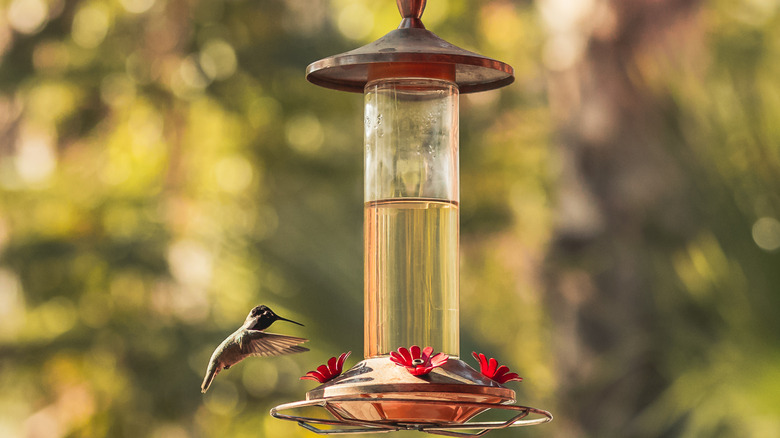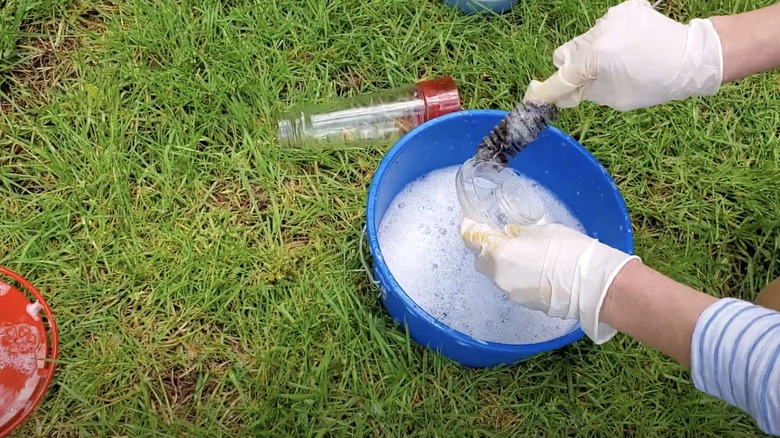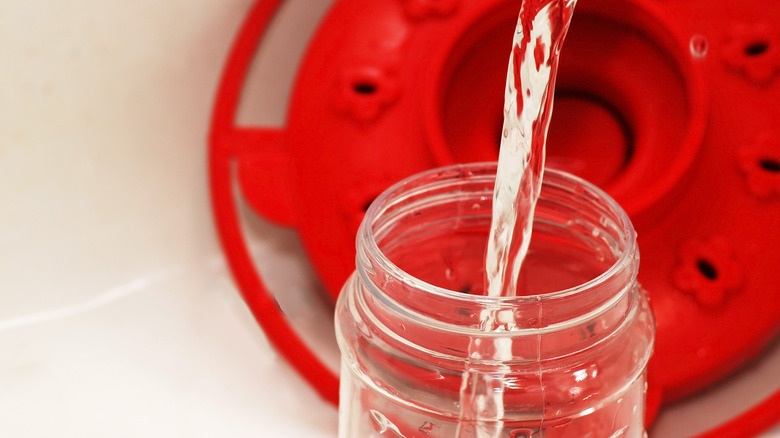The Crucial Step You Might Be Forgetting When Cleaning Your Hummingbird Feeder
Hummingbirds are exquisite. The adorable small-natured bird can make an ordinary day feel extraordinary when they fly in to visit your backyard. How fast they beat their wings is quite remarkable, and watching them pollinate plants is something not to miss. Hummingbirds play a critical role in the ecosystem with their cross-pollinating capabilities and can usually be found in abundance in the spring and summertime. Like other birds, most hummingbirds do not stick around in the winter and migrate south, usually arriving back in four-season climates between March and May. If you're eager for their return, this is a great time to prepare for their beautiful arrival. And one commitment that should not be taken lightly is cleaning your hummingbird feeder.
If your hummingbird feeder is not regularly cleaned, fungi and bacteria can grow inside of it which can cause hummingbirds to get sick and even die. The sugar content from the nectar in your feeder can become a breeding ground for bacteria and can become particularly problematic during long stretches of hot weather. Because most feeders have tiny parts, the buildup can get stuck, so a quick rinse is not sufficient enough when cleaning it. Instead, to safely clean your hummingbird feeders, they need to be taken apart fully.
Take apart feeder and soak pieces in warm water
The best types of hummingbird feeders on the market may all look different, but most of them have the same inner parts and are relatively easy to disassemble. Your hummingbird feeder likely includes smaller pieces such as the feeder tubes and perches, as well as larger pieces such as the base feeder and main container that holds the nectar. After taking it all apart, soak your feeder in hot water, which can contain diluted bleach solution or a drop of unscented dish soap. While some sources advise avoiding soap, the general consensus is that you can use a small amount as long as you thoroughly rinse off the residue. A small feeder mop works great to scrub off possible mold buildup, which appears as black dots inside your feeder. When you're done, rinse everything with cold water and let the pieces dry.
How often you clean your hummingbird feeder really depends on two important factors: the climate and how many birds are visiting it. In the summer months, it's recommended to clean them at least once a week. And don't forget to keep an eye on the nectar, too.
Change out nectar often in the summer
Hot and humid conditions can cause the nectar to ferment rather quickly, which is why it's important to change it out every four to five days during the summer months. If you notice the nectar becoming cloudy, that's a good indication it has spoiled — in this case, the liquid needs to be taken out immediately.
And how you store your nectar is equally as important. Keeping it in a cool place such as a refrigerator will ensure it stays fresh. The problem is, if the nectar has gone bad it can make several hummingbirds sick all at once who've gotten used to relying on the feeder for food. What makes this even more concerning is there are a number of hummingbird species listed as vulnerable or endangered. So consider this when the cleaning seems time-consuming — regularly caring for your feeder can help protect hummingbird populations so they're around for many years to come.


